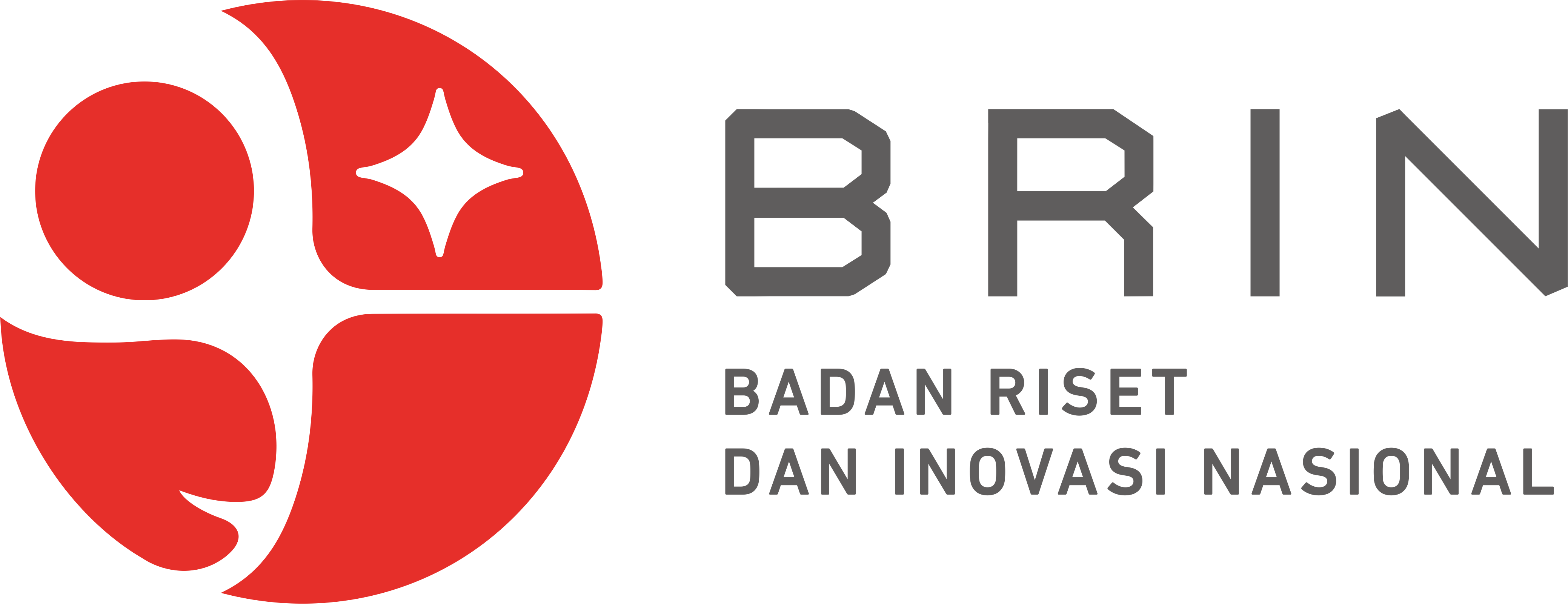HUBUNGAN ANTARA EGOSENTRISME DENGAN PENERIMAAN SOSIAL SISWA REGULER TERHADAP SISWA BERKEBUTUHAN KHUSUS DI SEKOLAH INKLUSI
DOI:
https://doi.org/10.35747/ph.v1i1.590Keywords:
Egosentrisme, penerimaan sosial, siswa reguler, siswa berkebutuhan khususAbstract
Pendidikan inklusi mendorong siswa reguler untuk belajar menerima, memahami, dan peduli terhadap siswa berkebutuhan khusus yang memiliki kekurangan. Tujuan dari penelitian ini adalah untuk mengetahui adakah hubungan antara egosentrisme dengan penerimaan sosial siswa reguler terhadap siswa ABK. Penelitian ini menggunakan penelitian kuantitatif non-eksperimen dengan menggunakan skala egosentrisme dan skala penerimaan sosial. Jumlah subjek pada penelitian ini adalah 114 siswa dengan mengunakan metode purposive sampling. Metode analisa data yang digunakan adalah uji korelasi product moment. Hasil penelitian menunjukkan bahwa tidak ada hubungan antara egosentrisme dengan penerimaan sosial atau hipotesis awal ditolak. Nilai signifikansi sebesar 0,397 (p>0,05) dan nilai korelasi adalah r= -0,080. Tingkat egosentrisme dan penerimaan siswa reguler berada pada kategori rendah.
References
Alberts, A., Elkind, D., & Ginsberg, S. (2007). The personal fable and risk-taking in early adolescence. Journal of Youth and Adolescence, 36(1), 71–76. https://doi.org/10.1007/s10964-006-9144-4
Anjassari, E. R. C. (2014). Penerimaan sosial siswa reguler terhadap siswa berkebutuhan khusus di kelas inklusi SMK Negeri 2 Malang. Universitas Negeri Malang.
Arnett, J. J. (2007). Adolescence and emerging adulthood: a cultural approach. New Jersey: Pearson Education.
Berk, L. E. (2006). Child development. Boston: 2006.
Berk, L. E., & Meyers, A. B. (2005). Infants, children, and adolescents. New York: Pearson Education.
Brighi, A., Mazzanti, C., Guarini, A., & Sansavini, A. (2015). Young children ’ s cliques : a study on processes of peer acceptance and cliques aggregation. The International Journal of Emotional Education, 7(1), 69–83.
Cohn, L. D., Millstein, S. G., E., I. J. C., Adler, N. E., Kegeles, S. M., Dolcini, P., & Stone, G. (1988). A comparison of two measures of egocentrism. JOURNAL OF PERSONAUIY ASSESSMENT, 52(2), 37–41. https://doi.org/10.1207/s15327752jpa5202
Cook, J. L., & Cook, G. (2007). The world of children. Boston: Pearson Education.
David, R., & Kuyini, A. B. (2012). Social inclusion: teachers as facilitators in peer acceptance of students with disabilities in regular classrooms in Tamil Nadu, India, 27, 157–168.
Desmita. (2008). Adolescence psikologi perkembangan. Bandung: Remaja Rosda Karya.
Galanaki, E. P. (2012). The imaginary audience and the personal fable : a test of Elkind ’ s theory of adolescent egocentrism. Psychology, 3(6), 457–466.
Gerungan, W. A. (2004). Psikologi sosial. Bandung: Refika Aditama.
Harvey, A. M. (2013). Adolescent egocentrism and psychosis. University of Birmingham. Retrieved from http://hdl.handle.net/10068/1000765%5Cnfile:///Users/marina/Library/Application Support/Zotero/Profiles/xqldzces.default/zotero/storage/339SAA5W/1000765.html%5Cnfile:///Users/marina/Library/Application Support/Zotero/Profiles/xqldzces.default/zotero/stora
Herlina. (2013). Bibiliotherapy: mengatasi masalah anak dan remaja melalui buku. Bandung: Pustaka Cendekia Utama.
Hurlock, E. B. (2002). Perkembangan anak, edisi 6. Jakarta: Penerbit Erlangga.
Irawati, N. (2015). Hubungan antara empati dengan penerimaan sosial siswa reguler terhadap siswa ABK di kelas inklusif (SMP N 2 Sewon). Universitas Negeri Yogyakarta.
Kail, R. V. (2005). Children. Ontario: Pearson Prentice Hall.
Koster, M., Nakken, H., Pijl, S. J., & & Houten, E. V. (2009). Being part of the peer group: A literature study focusing on the social dimension of inclusion in education. International Journal of Inclusive Education, 13(2), 117–140. https://doi.org/10.1080/13603110701284680
Koster, M., Pijl, S. J., Nakken, H., & Houten, E. Van. (2010). Social participation of students with special needs in regular primary education in the Netherlands. International Journal of Disability, Development and Education, 57(1), 59–75. https://doi.org/10.1080/10349120903537905
Kristiani, L. V, & Widodo, B. (2015). Efektifitas konseling kelompok adlerian dalam mengatasi perilaku egosentris pada siswa remaja. Educatio Vitae, 2(1), 23–44.
Landicho, L. C., Cabanig, M. C. A., Cortes, M. S. F., & Villamor, B. J. O. Y. B. (2014). Egocentrism and risk-taking among adolescents. Asia Pacific Journal of Multidiscplinary Research, 2(3), 132–142.
Lorger, T., Schmidt, M., & Vukman, K. B. (2015). The social scceptance of secondary school students with learning disabilities ( LD ). Center for Educational Policy Studies Journal, 5(Ld), 177–195. Retrieved from http://www.cepsj.si/pdfs/cepsj_5_2/cepsj_5-2-2015_Lorger et al_pp_177-194.pdf
Martorell, G., Papalia, D. E., & Feldman, R. D. (2014). A child’s world infancy through adolescence. New York: McGraw-Hill Education.
Muntaz, A., & Rahmawati, A. (2015). Proses adaptasi sosial disabilitas dengan siswa nondisabilitas di sekolah inklusi (studi kasus pada siswa tunanetra di SMP Inklusi Taman Pendidikan dan Asuhan Kabupaten Jembar). Ilmu Kesejahteraan Sosial Universitas Jember JURNAL, (April), 1–14.
Oberle, E., & Schonert-reichl, K. A. (2013). Relations among peer acceptance , inhibitory control , and math achievement in early adolescence. Journal of Applied Developmental Psychology, 34(1), 45–51. https://doi.org/10.1016/j.appdev.2012.09.003
Papalia, D. E., Olds, S. W., & Feldman, R. D. (2002). A child’s world: infancy through adolescence. New York: McGraw-Hill.
Rahman, F. (2010). Hubungan egosentrisme dengan kompetensi sosial remaja siswa SMP Muhammadiyah 22 Setiabudi Pamulang. Universitas Islam Negeri Syarif Hidayatuallah Jakarta.
Santrock, J. W. (2003). Adolesence perkembangan remaja. Jakarta: Erlangga.
Santrock, J. W. (2007). Remaja, edisi ke sebelas. Jakarta: Penerbit Erlangga.
Santrock, J. W. (2011). Masa perkembangan anak (11th ed.). Jakarta: Salemba Humanika.
Santrock, J. W. (2012). Perkembangan masa hidup, edisi ke tigabelas. Jakarta: Penerbit Erlangga.
Schaefer, C. E., & Millman, H. L. (1982). How to help children with common problem. New York: Van Nostrand Reinhold Company.
Schwab, S. (2017). The impact of contact on students attitudes towards peers with disabilities. Research in Developmental Disabilities, 62, 160–165. https://doi.org/10.1016/j.ridd.2017.01.015
Schwab, S., Huber, C., & Gebhardt, M. (2016). Social acceptance of students with Down syndrome and students without disability. Educational Psychology, 36(8), 1501–1515. https://doi.org/10.1080/01443410.2015.1059924
Sugiyono. (2016). Metode penelitian pendidikan (pendekatan kuantitatif, kualitatif, dan R&D. Bandung: Alfabeta.
Sumanto. (2014). Teori dan aplikasi metode penelitian. Jakarta: PT. Buku Seru.
Suparno. (2010). Pendidikan inklusif untuk anak usia dini. Jurnal Pendidikan Khusus, 7(2), 1–17.
Taylor, S. E. (1995). Health psychology. Singapore: Mc. Graw-Hill Book Co.
Yusuf, S. L. N. (2014). Psikologi perkembangan anak & remaja. Bandung: PT. Remaja Rosdakarya.
Downloads
Published
How to Cite
Issue
Section
License
Copyright (c) 2019 Khoirun Nissa, Alifah Nabilah Masturah, Achmad Faisal

This work is licensed under a Creative Commons Attribution-ShareAlike 4.0 International License.














